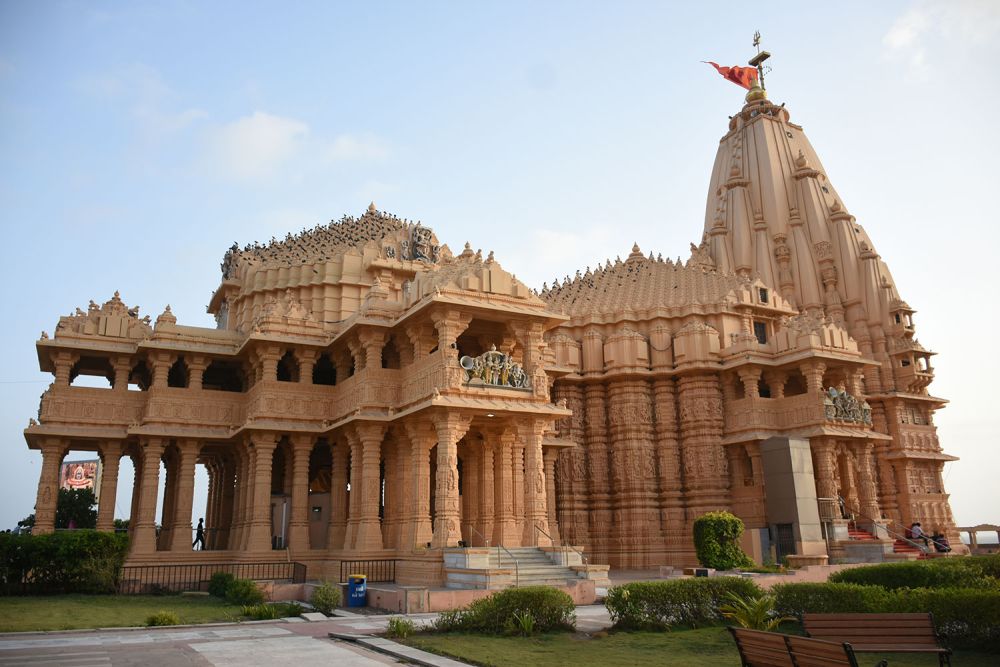

The Somnath Temple in Somnath, Gujarat, is not just a testament to spirituality, but also a significant emblem of India's historical and cultural heritage. Nestled on the western coast of India, it draws millions of pilgrims and tourists every year.
The history of tourism at Somnath Temple can be traced back to ancient times when it was known to be a pilgrimage site for Hindus across the subcontinent. The original temple is said to have been built by the moon god himself out of gold, then rebuilt by Ravana in silver, by Krishna in wood, and by Bhimdev in stone. These accounts point to its mythical and historical significance, attracting visitors over centuries.
However, the temple faced repeated destructions, most notably by Mahmud of Ghazni in 1026 AD and later by other rulers. In spite of that, the temple has risen from the ashes like a phoenix, which has only added to its allure and the number of visitors it attracts.
Post-independence, the temple was reconstructed in 1951, under the guidance of Sardar Vallabhbhai Patel, the then Deputy Prime Minister of India. From that point on, tourism saw a gradual and steady growth as the temple regained its lost glory. The newer constructions have kept the ancient architectural style in mind, making it an architectural marvel of the Chalukya style.
Today, the temple is managed by the Shree Somnath Trust, and they have taken various initiatives to promote tourism while maintaining the sanctity of the site. With the latest amenities and visitor-friendly facilities, the temple premises are more accessible to tourists across the globe.
Digital presence and virtual tours have also become part of the latest tourism trend, especially in the wake of the COVID-19 pandemic. Many people prefer to explore the spiritual site from the comfort of their homes. However, the tactile experience of visiting the temple, hearing the waves of the Arabian Sea, and feeling the wind has a charm of its own that continues to attract tourists physically.
Moreover, the temple organizes several festivals and fairs throughout the year, with the most popular being the Somnath Mahadev Fair, which coincides with the full moon of the Hindu month of Kartik. This event sees a spike in tourist footfall every year.
Accessibility to Somnath has improved with better road, rail, and air connectivity, playing an instrumental role in the tourism boom. Plans for future development include creating thematic parks, museums, and improved accommodations that promise to further stimulate traveler interest in the area. The local government also actively promotes Somnath in various tourism campaigns showcasing the cultural richness of Gujarat.
For those planning a visit, the best time to travel to Somnath is from October to March when the weather is pleasant and conducive for exploring. In addition to the spiritual experience, tourists can also enjoy nearby beaches, local handicraft markets, and delicious Gujarati cuisine, thereby providing a holistic cultural experience.
In conclusion, Somnath Temple is not just a pilgrimage destination but also an extraordinary example of India's resilience and the eternal allure of its cultural landmarks. It continues to uphold its historical mystique while evolving with the modern trends in tourism, attracting visitors from around the world.